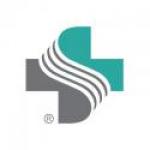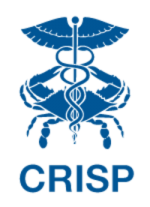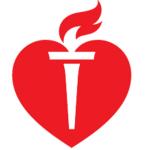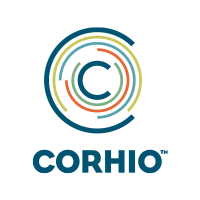Sutter Health- “Mpower” Best Practices

Sutter Health- “Mpower” Story of Innovation
Sutter Health is a not-for-profit health system in Northern California, which has created a project called Mpower. This is an approach that involves the development of systems and models of care that will help engage patients to take greater responsibility for their health and health outcomes. This utilizes a technology that will help the provider and the patient to understand how well the patient is doing well as to assist in manage and coordinate the workflow of care teams.
We are focused on intervention for people with chronic conditions. Our vision is managing both the condition and prevention seamlessly on a continuum using our technology and improved workflows. This is about shifting the model of care and the engagement of individuals in their day to day life by helping people understand and set goals and objectives to make reasonable progress towards health goals. We are currently focused on cardiovascular diseases, liver disorders, diabetes, high blood pressure. The model is generic and can be applied to any disease.The technology is doing the job of helping manage and interpreting information. We’ve developed an application that’s more of a system to support Mpower programs. It complements the functionalities of EHRs.
Best Practices
- Turning data into progress - The technology helps coordinate goals and objectives set by the patient and their care team. Using patient generated health data that is collected from devices that the patient is using e.g glucometer, Fitbit etc. We collect this information in our Mpower system, interpret it and give feedback to the individual in terms of their progress and performance towards achieving their health goals. This helps to stratify patients and identify patients who need additional attention.
- Functionality - We have put a lot of effort into thinking about the workflows and the type of operational efficiencies to make the technology work. We have to think about getting engagement from the physicians who are often quite intolerable to disruptions of their workflow. We have done a lot of work to interface this technology into the Epic EHR that physicians use. This has been very challenging and remains so. We have been creative and have taken functionalities that exist in EPIC and have used them to do interfacing with our Mpower technology. A lot of what we are doing is not directly targeted at physicians. Part of the objectives in this is to enable other care team members to be working in their highest level of practice and not bombard physicians with unnecessary information. This is about enabling the distribution of care across the care team.
- Reaching more patients - It’s challenging to manage the health of patients with complex chronic problems. We are good at managing the health of the patients that come to see us, but what about those patients that do not come? We have a responsibility for those patients as well and as funding models begin to shift to population health we need to find ways to meet them where they are. Part of this is tapping into consumerism and providing a different experience by supporting people in their day to day lives. We need to find ways to enable our care teams to manage more people and scale this program to care for a larger number of patients.
- Adaptibility - We followed a process of rapid cycle innovation. We have allowed ourselves to make very rapid changes to the system based on feedback we’ve gotten. This has enabled us to be nimble in responding to issues that have come up. Being nimble to make changes based on feedback and learning is one factor.
- Long-term: looking at financial sustainability - at this time this kind of process does not generate revenue. We are driving work out of the clinic and providing care in a remote context, and there are not a lot of funding models that compensate for this type of work. At the end of the day we have to be financially sustainable. Hence, our rate of progress may actually be slowed down as there are not many funding models that support this type of approach.
Children's Medical Center Dallas - “School-based Telemedicine,” Best Practices
Children's Medical Center Dallas - “School-based Telemedicine,” Best Practices
Children's Medical Center Dallas is the main hospital campus of Children's Health, and provides expert pediatric health, wellness & acute care services in Dallas and throughout Texas. The school-based telemedicine program was started to use technology innovation to reach kids where they spend most of their time, which is at school. The program brings health services to campuses and promotes health literacy. We assessed the need for this technology through conversations with community partners to learn how to best serve the community. One of the problems we identified was that many kids did not having access to care due to a shortage of pediatricians that accept Medicaid. We found that there are opportunities to bring care to the school setting and reach kids where they are in schools. We then started a pilot and targeted families who are struggling in terms of access to care. We received state funding for the program and launched it at 30 campuses. We are now in final phase and are in 97 schools. This program brings a lot convenience to families as it is usually difficult for parents to take time off from work to take their children to the doctor.
Best Practices
- Outreach - We did a lot of meeting the neighbors, introduced the concept of telemedicine and offered a value proposition to the schools. Initially we had 4 to 5 schools. We went to school boards, families, community pediatricians, family doctors and law makers (legislatures) regarding billing. To our victory, they passed house bill 78 to allow for telemedicine in school setting. We met resistance from the Community at large – resistance from families. To overcome this, we developed a family and parental engagement plan. Community providers worried that we were only doing this to gain more patients so we had to meet with constituents before launching to explain the value it will bring to them. School board and leaders were also resistant. We realized that we needed to have a great message on how program would be successful on campuses.
- Coordination - Initial implementation team had to bring in a lot of internal partners such as marketing, PR, compliance and legal, internal doctors, nurse practitioners and IT team.
- Legal and compliance (FERPA) and HIPAA – types of data needs to be spelled out for agreement purposes

Chesapeake Regional Information System (CRISP) Best Practices

Chesapeake Regional Information System (CRISP) Best Practices
In 2009, the Maryland Health Care Commission (MHCC) and the Health Services Cost Review Commission (HSCRC) designated the Chesapeake Regional Information System for our Patients (CRISP or State-Designated HIE) to build and maintain the technical infrastructure to support a statewide HIE. The long-term goal of the State-Designated HIE is to build the fundamental foundation for interoperability to communicate health data among Maryland physicians, hospitals, and other health care organizations and providers. The State-Designated HIE will also enable communities with regional HIEs to connect to other communities around the State and, in the future, with providers in other states.
Best practices
- Wide range of data - We created a report that combines hospital claims data to allow users to filter with hospital MRN, etc. It is through this report that hospitals identify the high-risk patients. CRISP gets all hospital claims data, mpi – longitudinal records.
- Provider access - Report goes to doctor, on the front end of care coordination. List can be exported so that doctor can follow up.
- Analytics - The value we add is analytics that can flag readmissions, chronic conditions etc. Report gives director of care management insight intotrends and allows the function to search patient by condition. This functionality is a powerful tool that can be used in initiatives to avoid readmissions, etc.
- Training - In our organization we built a training program so they understand use cases
- Goal setting - We have set milestones – actual people who use the technology, number of times accessed.
Quality Health Network HIE Best Practices
Quality Health Network HIE - Best Practices
QHN is a not-for-profit community partnership, established to support the adoption of health information technology, provide health information exchange (HIE) services and promote innovative uses of electronic health information for improved healthcare outcomes. We try to link the information about people such that providers of services can do a better job. We are really interested in connecting service providers to the needs of individuals. Our organization is not just about technology, it’s about the relationships we build, it’s about people and processes and workflows.
We are trying to do a better job of data collection and distribution as well as aggregation and normalization in order to provide relevant and meaningful information to our stakeholders at an appropriate time. There’s far too much data and not enough information. Doctors are drowning in data and what they are interested in is information. We do a variety of things to filter and to customize what we push to the physicians based on the individual physicians practice and preference.
Using health IT leads to benefits by facilitating creating value designed for specific stakeholders.
Best Practices
- Filtering - With routing and mapping we are able to filter the information using Mirth Connect which is an interface engine software. On top of the exchange of patient data we are also able to do really high level filtering which is really unique.
- Physician input - Physicians dominate our board and direct what we do. We could not figure out why the longitudinal health records that we created were not being used more frequently. The physicians then helped us to understand that we did not have the right information in there. They said “we can always go to a hospital or a lab to see lab tests and radiology reports and discharge summaries, but what we cannot see is the progress notes that an ambulatory physician wrote two weeks ago while the patient was in the hospital”.
- Utilizing progress notes - QHN began doing progress notes which basically tells the patient’s story as opposed to plain discrete data. Most of the CCDs don’t have the progress notes in them. We have been engaged in collecting them using very special interfaces and working willing EHR vendors who would export those notes to us.
- Pushing the data - This makes it easier for providers to receive the information they seek. The concept of ‘push’ is based on the premise that we really want to understand when an exceptional event has occurred, notify the relevant people that the exceptional event has occurred and may need additional scrutiny, and then either provide the data directly to the providers who need to know about it or give them the ability to query that specific information. We observed that there was a dramatic difference between the number of ED acute stay admits and discharges that we were collecting verses the number of times we were actually able to inform the physician that their patient showed up in the ED. So we began a process that we call “Subscription” which allows us to push this information to the primary care doctors who are subscribed to the HIE so that the doc knows that the patient has been admitted into the ED. We are not depending on the registrar to ask who their primary care doc. We can also send this to case management for Medicare and Medicaid patients who do not have primary care doctors.
- Watch out for vendor consolidation - We are attracted to smaller very nimble vendors because they are able to meet the needs of our participants. What happens all too often is that these small nimble organizations get bought up by larger ossified bureaucracies and the cost typically goes up and the nimbleness goes down. This is a problem for our industry. Size does not necessarily equate to success. We not only have to have sufficient revenue streams to sustain our operations but we have to accumulate sufficient revenue to have capital available to replace platform components when the vendor situation has changed and caused us consternation. Many of the people in our space do not fund depreciation of their platforms; they do not plan to have to swap it. In addition to consolidation of the industry there will be an ongoing cost to conversions.
- Price adjustment - Try to tie subscription rates to lives covered, that is per member per month, as opposed to one price regardless of size. This will be a much more structed methodology of providing for smaller scale participants and permits the ability to grow revenues over time as the scale increases.
American Heart Association- “Guideline Advantage” Best Practices

American Heart Association- “Guideline Advantage” Best Practices
AHA is the largest voluntary health organization in country dedicated to improving the lives of cardiovascular and stroke patients. We have a 20/20 impact goal to improve cardiovascular health of all Americans by 20% by the year 2020. As a national organization, we have 7 offices across the country that are responsible for rolling out local and statebased activities. We have clinician members, however, we are a patient organization. Our clinician members offer a professional council and a clinical vantage point. There are 30 million clinician and advocate volunteers which include patients, family members, caregivers etc.
AHA's innovation is a program called “Guideline Advantage” which is a quality improvement program enabled by a registry that helps physicians to monitor and track their patient populations. It sits on top of the EHR and is vendor agnostic. It is a collaborative project with the American Diabetes Association and American Cancer Society. The program itself is a qualified data registry for the purposes of reporting.
The program was built on the AHA clinical care guidelines and is intended to speed the time for which clinical guidelines are put into practice and support physicians in delivering evidence based care. The program is also aimed at identifying gaps in care so that physicians can target their care to address these deficiencies. At a practice level physicians are finding that it gives them the data the need to manage their patients on a population level. It provides more usable information that can be extended to offer clinical insight at a population level.
Utilizing health IT will improve health outcomes of patients in the short-term by leveraging information in the system that can be used by physicians to improve delivery, and increase evidence based care being delivered and better health outcomes in the long-term, ultimately moving towards AHA's 2020 goal.
Best Practices
- Utilizing expertise - As AHA is a volunteer based organization, we drew on the expertise of our volunteers and the volunteers at The American Cancer Society and The American Diabetes Association. We used volunteer boards to help lay out what the program should look like, decide which guidelines to focus on, and what information clinicians will need during and after the point of care. The actual infrastructure of the program was created by a vendor called Forward Health Group.
- Coordination - We have had to work with the 2 other organizations to ensure buy-in across the board. This entailed working with their members and that of the other organizations’. We also worked with internal staff to plan the day to day operation of the program. Buy-in had to be obtained from primary care physicians, oncologists and other physicians. AHA’s side worked through details with volunteers to make sure we were comfortable with the central premise and structure of the program at every step of the process. From a physician standpoint, it involved conducting demonstrations, going into practices and making sure it sits on top of existing technology. A lot of onboarding was done initially by working with both other organizations from the onset so that it did not seem like one organization’s project. This involved a lot of internal messaging working with external physicians to help them understand how this program achieves the organization’s mission. There is still a fair amount of internal by-in that needs to happen in order propel its success further.
- Education and training - Stakeholders were prepared through upfront knowledge building on the product; explaining what it can do. Once we decide we want to implement product there is prep work to make sure data map and the tools work. Following this is a series of trials and tests to make sure that it is operating effectively. A fair amount of training is also involved- although it does not necessarily require changes in workflow, training is needed in terms of how it can be used to help current quality improvement programs in practices. A fair amount of education and organization capacity building is also required. Once implemented, technical assistance is offered to help them optimize their use of the tool.
- Showcasing potential - The assumed response by physicians is that this is going to be more work or more of an administrative burden. We had to do a lot of hand holding demonstrations to help them to see the potential of their data by demonstrating what it can do. This required efforts to connect this program to other existing programs that physicians were using.
CORHIO Best Practices

CORHIO Best Practices
Improving health through enhanced use of information technology and data exchange is the heart of what we do. We manage one of the country’s largest and most successful health information exchange (HIE) networks, provide advisory services that help healthcare professionals effectively use technology and improve care delivery, and supply health plans and accountable care organizations (ACOs) with valuable data that enhance analytics and population health programs. As an independent, non-profit organization, we are dedicated to serving all of Colorado's healthcare stakeholders including physicians, hospitals, behavioral health, emergency medical services, public health, long-term care, laboratories, imaging centers, health plans, communities and patients.
We were asked to solve the problem of combining data from different grants to focus on behavioral health. We became financially sustainable, successful at exchanging data and opened doors to behavioral health which proved to be of great value to the healthcare community. We were recipient of several grants which encouraged combining healthcare and behavioral health; key
component of grant was how to exchange the information.
Our core interest is to ensure that the providers and patients are connected to have the whole view of a patient and can understand connectivity of different aspects of their health and care; many
behavioral health patients also have substance abuse problems.
Best Practices
- Consent Management System - We decided to create a consent management system for mental health groups – added another exchange method to HIE. We are the only group that allows docs to determine which information is available to be exchanged. Patient can determine which doctor sees the information.
- Education - We educate patients on this consent practice using a 3 pronged approach – collaborating with a substance abuse treatmentorganization – they will create educational materials for patients – both written and electronic video; work with peer support specialists; make the consent be available within the personal health record. HIEs are also educating primary docs on the value of behavioral health on primary care.
CVS Minute Clinic Best Practices
CVS “MinuteClinic” Best Practices
CVS Pharmacy is currently the largest pharmacy chain in the United States. All of the roles in a normal practice are rolled up into one person at the MinuteClinic. The MinuteClinic has a patient-centric focus. It provides on-demand access to primary care at the convenience of patient at different times during the day. Its cost value proposition is that it’s affordable care, fees are transparent, and it’s less expensive than primary care with high deductibles. If the patient does not have a primary care physician, CVS does referrals. CVS does not have doctors, choosing to focus on what they can do and try not to get into what they cannot do. All complex issues are referred out.
Best Practices
- Integrated Information - CVS has dozens of affiliations, including Cleveland clinic doctors. If you are a Cleveland clinic patient, CVS sends your information to Cleveland clinic – through Epic Care Everywhere which automatically connects with Epic anywhere with patient consent. They can send CCR’s and faxes to all other primary care doctors that are not on the Epic Care network.
- "Hold my place in line" saves your place in line and also provides the patient with how long the wait will be. Furthermore, enhances MinuteClinic's convenience by giving patients information on which clinic to go to based on wait time.
- Efficiency - Using EPIC (62% of providers use), Minute Clinic is as close to automated as you can get. IT is also used for insurance card scanning, saving time for entry. Ultimately providers want to spend more time with the patient rather than conducting data entry.

